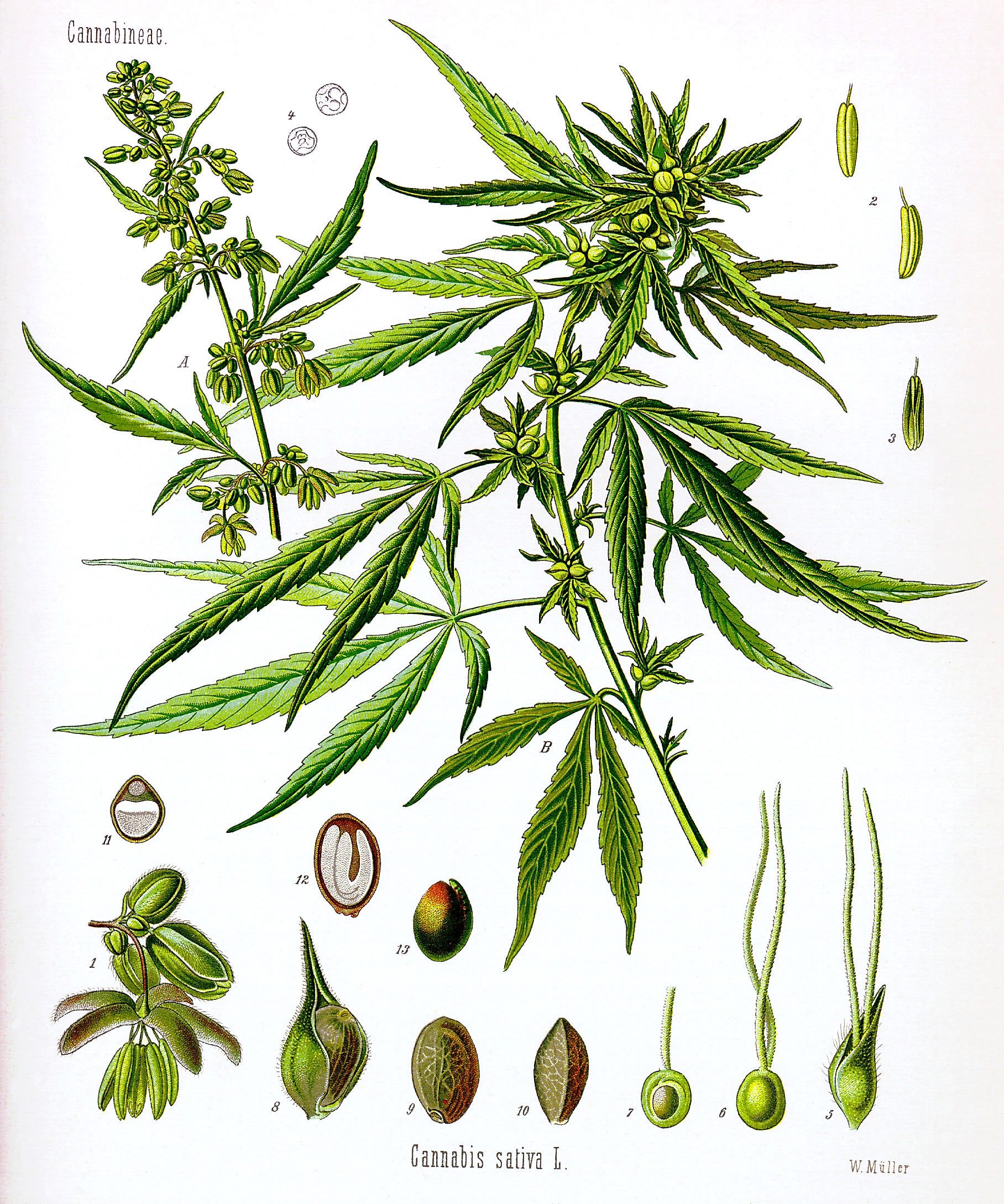The Quest for an Ancient Culture’s Cannabis-Filled Cooking
The Svans, from Georgia’s Caucasus region, had their weed culture (and plants) uprooted.

Khachapuri, the cheese bread native to Georgia, is a regional staple. But a local rumor holds that the Svans—an ancient community living in the highest settlements of the Caucasus—eat a fragrant, weed-filled iteration. From the moment a Georgian friend told me about this elusive dish, I couldn’t stop thinking about it—I wondered what it tasted like, whether anyone still made it—and, naturally, whether or not it would get me stoned.
Nobody seemed to know if this yarn was true or not. Some of my friends in Tbilisi speculated that weed-based dishes would’ve gone extinct during the Soviet crackdown on narcotics. Others wondered if the ever-rebellious Svans still secretly indulged in cannabis cuisine today. A few scoffed: After all, the idea that “edibles” could exist in a remote part of Orthodox Christian Georgia was ridiculous. When trying to reach historians and anthropologists specializing in the region, I got radio silence. “Who are the Svans?” asked the academics who’d written books on cannabis. Intuiting my next move, my friend Mako Kavtaradze, a tour guide who travels often to the region, warned: “Don’t go looking for answers in Svaneti. The Svans won’t take well to a foreigner trying to uncover local secrets.”
Several years ago, I’d left the Caucasus with a knot in my stomach after hearing Svans lament the erosion of their millennia-old traditions. A variety of factors—including rural flight, a new road, and a sudden uptick in tourism—tested the resilience of their cultural DNA, from their pagan-inflected religion to their polyphonic folk music. If cannabis was also integral to Svan culture, I wanted to learn about that heritage before it, too, might be lost in the tides of globalization.

To understand how cannabis is entwined with ancient cultures, we first have to travel back approximately 2,500 years to the Turpan Basin (in contemporary Xinjiang, China). A 35-year-old man has just died, and members of his community, the Jushi, are preparing his body for burial. They lay him on a wooden cot, tucking a reed pillow under his head. Then, they shroud him from neck to waist with carefully interlaid cannabis plants—13 in total, some over three feet tall—before lowering him into the ground. Archaeologists are stumped as to the leafy stalks’ significance, but this exceptionally well-preserved tomb, unearthed in 2016, bears one of the oldest known instances of ritualized cannabis use. It’s especially compelling because of these specific plants’ biochemical makeup, which boasts high levels of tetrahydrocannabinol (THC). In other words, humans have likely been getting high for centuries.
There’s even earlier evidence—dating back some 10,000 years—of people spinning fiber from hemp. But the distinction between cannabis and hemp is important. “In the last decade, science has confirmed what many scholars already suspected, that there are two distinct genetic groups of cannabis,” says Chris S. Duvall, associate professor at the University of New Mexico and author of Cannabis, a cultural and geographical history of the eponymous plant. “Historically, the plants grown for hemp in temperate Eurasia weren’t psychoactive, while those native to southern Asia were,” he adds, debunking the myth that virtue was the primary reason Europeans, as avid hemp producers and consumers, didn’t use cannabis as a narcotic.
Non-psychoactive cannabis seeds, which contain trace amounts of THC, were once a common ingredient in dishes across Europe and Asia, prized for their piquancy and nutrient-packed oil. Russians added them to peas, Poles boiled them in a Christmas soup called siemieniatka, and, in some parts of China, people still eat them by the handful like popcorn. The seeds were so popular that they even appear in the first cookbook ever printed (circa 1465), De Honesta Voluptate, by Bartolomeo Platina. It includes several recipes that call for cannabis seeds, including the unceremoniously named “hemp dish”:
[…] cook a pound of well-washed hemp until it splits open. When it is cooked, add a pound of almonds. When it has been pounded with bread crumbs in a mortar, moisten it with lean stock, and stir it into a pot through a sieve. Then, when it has been placed on the hearth, stir it frequently with a spoon. When it is almost cooked, put in a half-pound of sugar, a half-ounce of ginger, and a little saffron with rose water. When it is cooked and apportioned on serving dishes, sprinkle with rather sweet spices.
Beyond its textile and culinary applications, cannabis took on a mystical significance in many ancient cultures, including the Jushi. For example, Herodotus wrote in 440 B.C. that the Scythians, a nomadic people, observed funerals by retreating into sealed woolen tents to burn cannabis seeds and inhale the smoke, only to emerge “transported with the scent” and “howl[ing] aloud.” (Though it’s curious to think about prehistoric mourners hotboxing away their sorrows, it’s unlikely that smoke would’ve had a narcotic effect, given the conspicuous absence of THC-heavy buds and flowers in Herodotus’s description.)
The more I learned about the ubiquity of cannabis in prehistoric Eurasia, the more hopeful I was that the Svans hadn’t lost their affinity for it through the centuries. After all, thanks to Svaneti’s impenetrable geography, the Svans had eluded invasions that ravaged the rest of Georgia. They had remained all but closed off from the outside world (Even today, most of the region is snowbound for seven months of the year). But with Georgia’s location at the crossroads of trade routes between north and south, east and west, the question lingered: If the Svans really cooked with weed, were they using it to get stoned like the Jushi, add flavor like the Russians, or commemorate sacred rites like the Scythians?
Next to nothing has been written about the origin of cannabis culture in Georgia, much less Svaneti. But Duvall reckons weed has been growing in and around Georgia for at least 2,700 years. “Based on geography and recovered remnants of cannabinoids in the larger Caucasus and Middle East, most of the crop would’ve been non-psychoactive, but certain populations probably had access to the psychoactive type,” he says. “To get high, people would have heated the cannabis in milk, butter, or oil, and consumed it as a drink.” (Fat is essential to extract the THC.) Dairy is the Svans’ main calorie source, so if the psychoactive strain was available in Svaneti, using it recreationally was certainly a possibility.
Luckily, some hints about Georgia’s cannabis-growing past can be gleaned from its neighbors. “Without a doubt, cannabis was cultivated for domestic purposes in Ancient Armenia,” says Yulia Antonyan, assistant professor of the Department of Cultural Studies at the Yerevan State University, citing recent research by Hrachia Beghlaryan and Suren Hobosyan. “But it isn’t until much later, in the 15th-century treatise on medicine Angitats Anpet (“Useless for Ignoramuses”), by Amirdovlat Amasiatsi, that we see cannabis explicitly mentioned for its narcotic effect, and even then it’s unclear whether Armenians were using it to that end.”
Conversely, references to cannabis are “staggeringly abundant” in the medieval texts of Azerbaijan, according to journalist and researcher Seshata Sensi. Between the 9th and 18th centuries, people ingested cannabis oil to treat various ailments, she writes, including catarrh, flatulence, and nausea. But that’s not all the plant was being used for: Medical scholar Farid Alakbarov notes in an in-depth study that some 2,600 years ago, Zoroastrian Azerbaijanis knocked back a hallucinogenic brew called haoma that could’ve contained cannabis as well.

The dearth of answers is how I find myself in a banged-up four-by-four, juddering toward the snowy peaks of Svaneti. I’m splitting a taxi to Ushguli (a hamlet above the treeline known for its UNESCO-protected 9th-century guard towers) with two twenty-something Georgians, Miriam Gigani and Ana Akhalia. At one point Ana takes her coat off, and I blink, bewildered at what I’m seeing: Her sweatshirt is emblazoned with the word “weed” in big, bold letters. Before I know it, Gigani (whose family is Svan) regales me with childhood memories of meter-high marijuana plants in her grandmother’s garden. “Before the drug laws were strengthened, it was totally normal to grow cannabis in this part of Georgia,” she says. “I think I tried weed khachapuri once when I was a child, but it’s impossible to find these days—everyone’s too afraid of getting caught.” As the chassis groans under our hiking boots, relief washes over me. Finally, some confirmation that I’m not on a fool’s errand.
Everyone I talk to in town—from the waitress at a local tavern to the patronne of the guest house where I’m staying—tells me the town’s local history expert is Mevluti Charqseliani, the 55-year-old owner of Ushguli’s Ethnographic Museum. I find him in his front yard sawing timber and gesture him over. I explain that I’m writing about Ushguli, and in typical Georgian fashion, he invites me into his home without a second’s hesitation. As I sit down across from him, I realize, this is it. If anyone knows what the deal is with cannabis in Svaneti, it’s him. But my palms are sweaty: Weed is a touchy subject, and I’m nervous he might interpret my questions as disrespectful.
Yet as soon as I say the word “cannabis,” he grins. “People don’t know about this important part of our history,” he says, explaining that until Soviet inspectors arrived in the ‘70s, every Svan household grew cannabis plants, which were used in their entirety. People plied the stem fibers into cloth and rope, and pressed the seeds for oil. Buds, flowers, and leaves (plus ground-up seeds) found their way into gooey cheese breads (knash), vegetable-walnut spreads (pkhali), and juicy meat pies (kubdari). And like the Scythians and the Jushi, the Svans associate cannabis with death: Knash was the most important dish at funeral banquets.

Georgian police ripped up the last of the for-domestic-use cannabis plants in the early ’90s, but by that time, most Svan families had gotten wind of the crackdown (and corresponding fines) and viewed growing weed as too risky. Charqseliani misses the oil most. “It was a cure-all, for everything from upset stomach to insomnia to earache,” he muses, adding that Svan cannabis oil was pressed using five-ton machines and so prized along the Silk Road that the Greeks paid top dollar for it.
I asked if the cannabis-based dishes were psychoactive. “Absolutely not,” he says, though his wife, Iza, remarks that she always slept like a baby after eating knash for dinner. (That’s probably the CBD talking.) “Politicians,” he scoffs, throwing his hands in the air, “they took away our marijuana and everybody got sick, and the irony is, nobody smoked weed here until it became the forbidden fruit. Today drugs are a problem in Svaneti.”
The current cannabis legalization debate in Svaneti is about far more than one’s right to smoke a joint: It’s about a community’s prerogative to preserve a millennia-old tradition. But cannabis was decriminalized in Georgia last December, after years of protests spearheaded by the liberal Girchi political party. Minor cannabis-related offenses that previously carried up to 14-year jail sentences will now be waived, and some hope that Tbilisi might someday become the “Amsterdam of the former Soviet Union.” It’s not out of the question, then, that cannabis khachapuri might make its way from folklore to dinner fare once again.
Gastro Obscura covers the world’s most wondrous food and drink.
Sign up for our email, delivered twice a week.

























Follow us on Twitter to get the latest on the world's hidden wonders.
Like us on Facebook to get the latest on the world's hidden wonders.
Follow us on Twitter Like us on Facebook